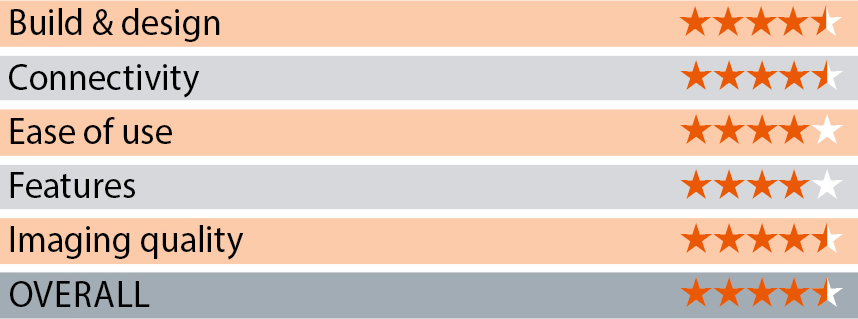FIRST LIGHT
QHYCCD QHY533C colour camera
It may be entry-level, but this cooled CMOS is loaded with leading-edge features
VITAL STATS
• Price £989
• Sensor Sony IMX533 colour
• Sensor size 1 inch
• Resolution 9MP, 3,008 x 3,028 pixels
• Exposure range 30ms to 3,600 seconds
• Connectivity USB 3.0, CFW port, power
• Size 9 x 9 x10.6cm
• Weight 845g
• Extras Mains power supply, USB 3.0 cable, adaptor kit
• Supplier Modern Astronomy
• Tel 020 8763 9953
• www.modernastronomy.com
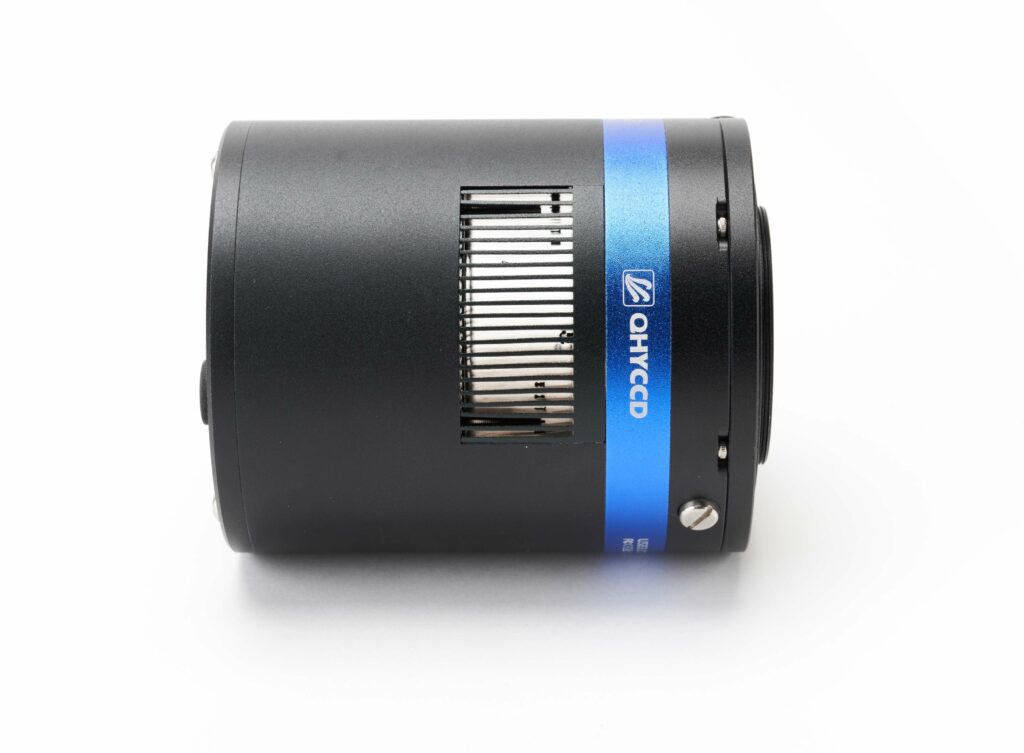
With the continued improvements we’re seeing with CMOS sensors for astrophotography, we were excited to take a look at QHY’s recent offering, the 533C active-cooled colour camera. The QHY533 comes with either a mono (533M) sensor or with the one we are testing, the 15.97mm Sony IMX533 colour (533C) sensor. These latest Sony sensors offer superb sensitivity and low noise while also eliminating all amp glow, a common issue for CMOS cameras.
QHYCCD pitches the 533 series as beginner or entry-level cameras, and with a 1-inch square sensor this is one of the smaller-chip CMOS cameras it produces for deep-sky imaging. At 9MP, the 533 may seem small compared to some of its competitors on the market, but don’t let that deceive you: the images produced from a 9MP camera will still be printable in formats larger than A3 size. Moreover, megapixels and resolution are not the only considerations, and this camera outperforms on read noise and dynamic range.
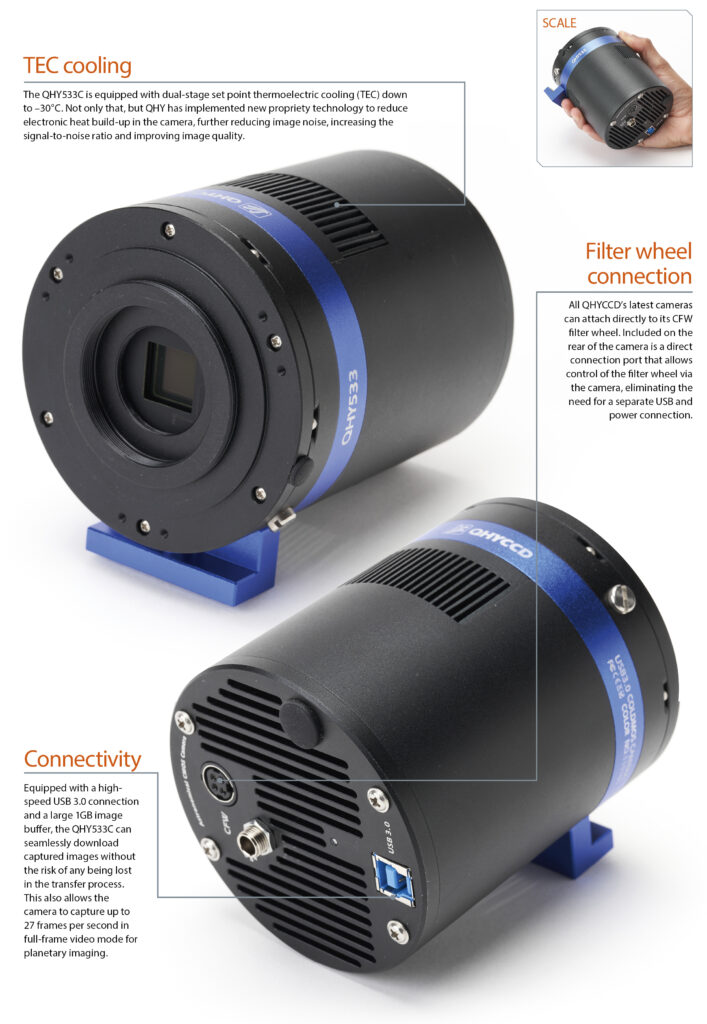
Square sensor
Unlike nearly all other daytime or astrophotography cameras, the QHY533 has a square sensor. For daytime photography this may be troublesome, but night-sky imagers tend to find it allows us to easily frame objects. CMOS sensors also come into their own with shorter exposures, so will be more forgiving when used with lighter or portable mounts, as tracking accuracy is not so critical. Despite being pitched as a beginner camera, the housing and build of the QHY533C easily matches that of QHYCCD’s high-end models and, with the significant addition of set point cooling, promises to deliver a lot of camera for the money.
Unboxing the camera, we found it to be made of solid aluminium and felt well-made. At 10.6cm long and 9cm wide, the weight of 845g will be easily handled by most telescope focusers without risk of slippage. Included in the box is a mains power supply, USB 3.0 cable and DSLR camera lens adaptor. Setting up was easy as QHYCCD has an all-in-one driver package available from its website. Once the drivers were installed, with the camera connected to our PC our capture software detected it and connected instantly. Loading the camera settings, it was nice to see some default settings available for gain and black level, depending on your target choice (deep-sky, planetary or solar). These will prove helpful for those new to deep-sky and CMOS imaging.
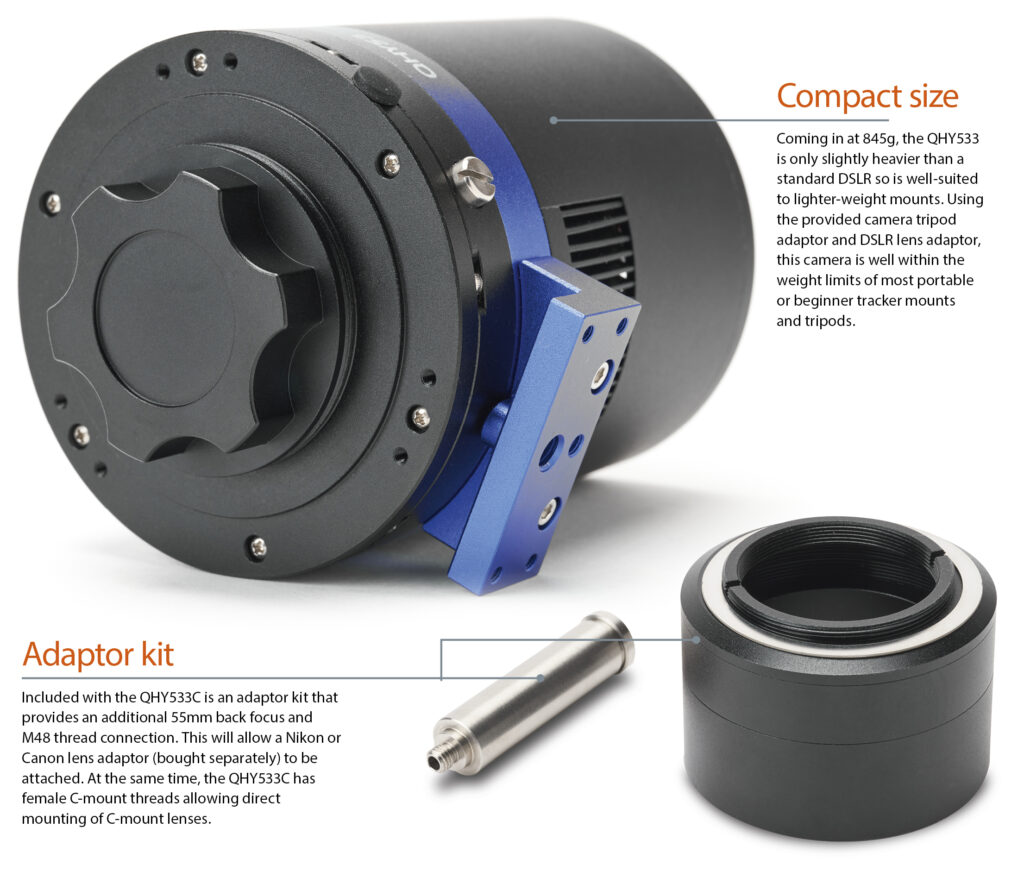
Leaving the setting on the default DSO (deep-sky object) mode, we set the cooler to –20°C and, once cooled, we ran a few dark frames to check for amp glow and noise. We were pleased to see that even when pushing the exposure time to five minutes there was no detectable amp glow in the images, even after an aggressive stretch. Beyond five minutes a very small amount of amp glow could be seen in the bottom corner, which was easily removed with calibration frames. Noise within the image was also minimal, and no hot pixels were found.
Cool performance
With a clear night ahead, we proceeded to connect the QHY533C to our 3-inch refractor. The camera has 17mm of back focus, so even with our filter holder attached we still needed to add a short extension tube to achieve focus. Slewing over to the Triangulum Galaxy, M33, we were able to locate it easily with exposures of one second, which made alignment incredibly simple. Increasing the exposure time, we were impressed with the sensitivity of the camera and level of detail coming through in the individual frames. Happy that everything was set up and working, we programmed in our imaging run and set the camera firing.
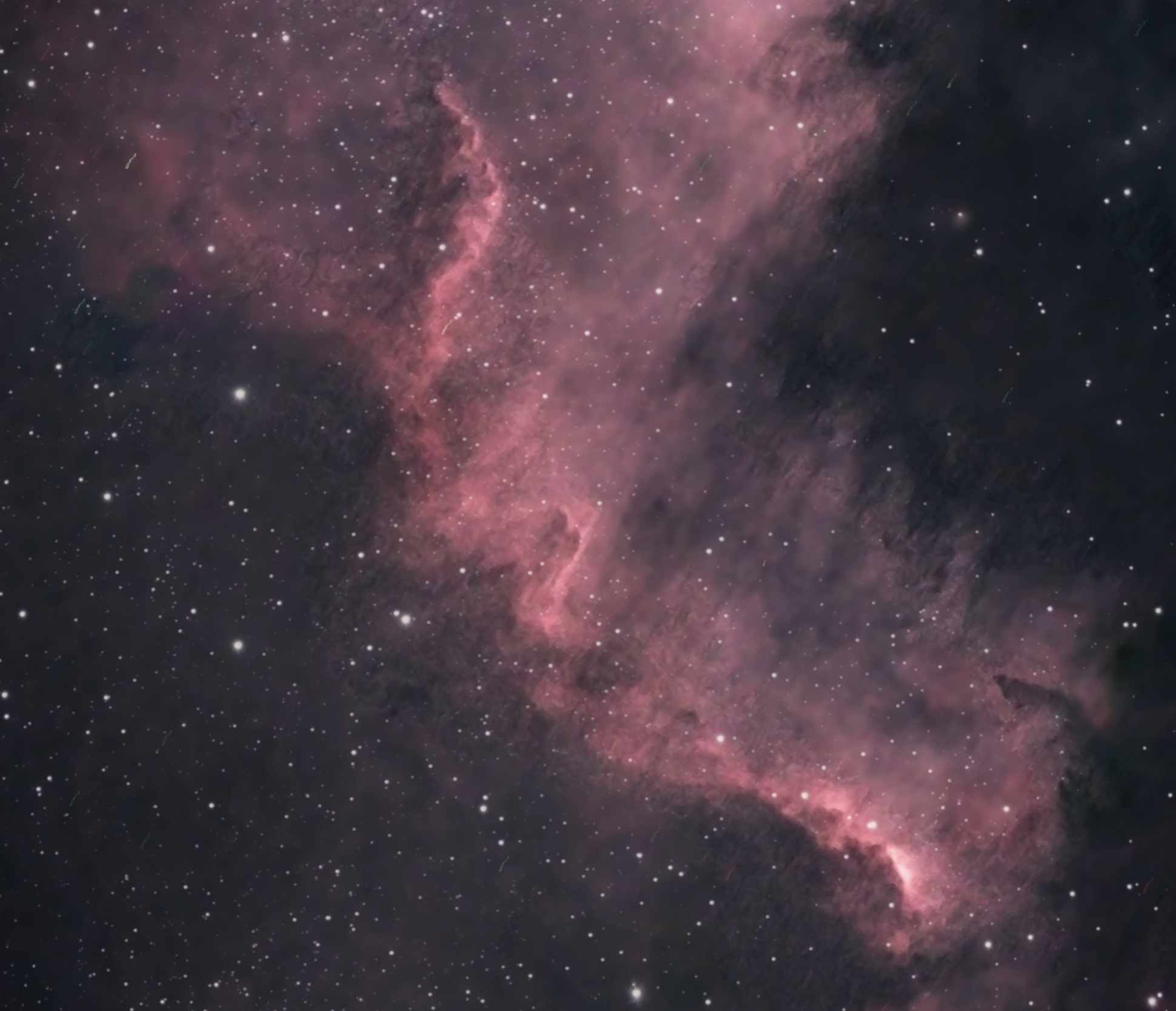
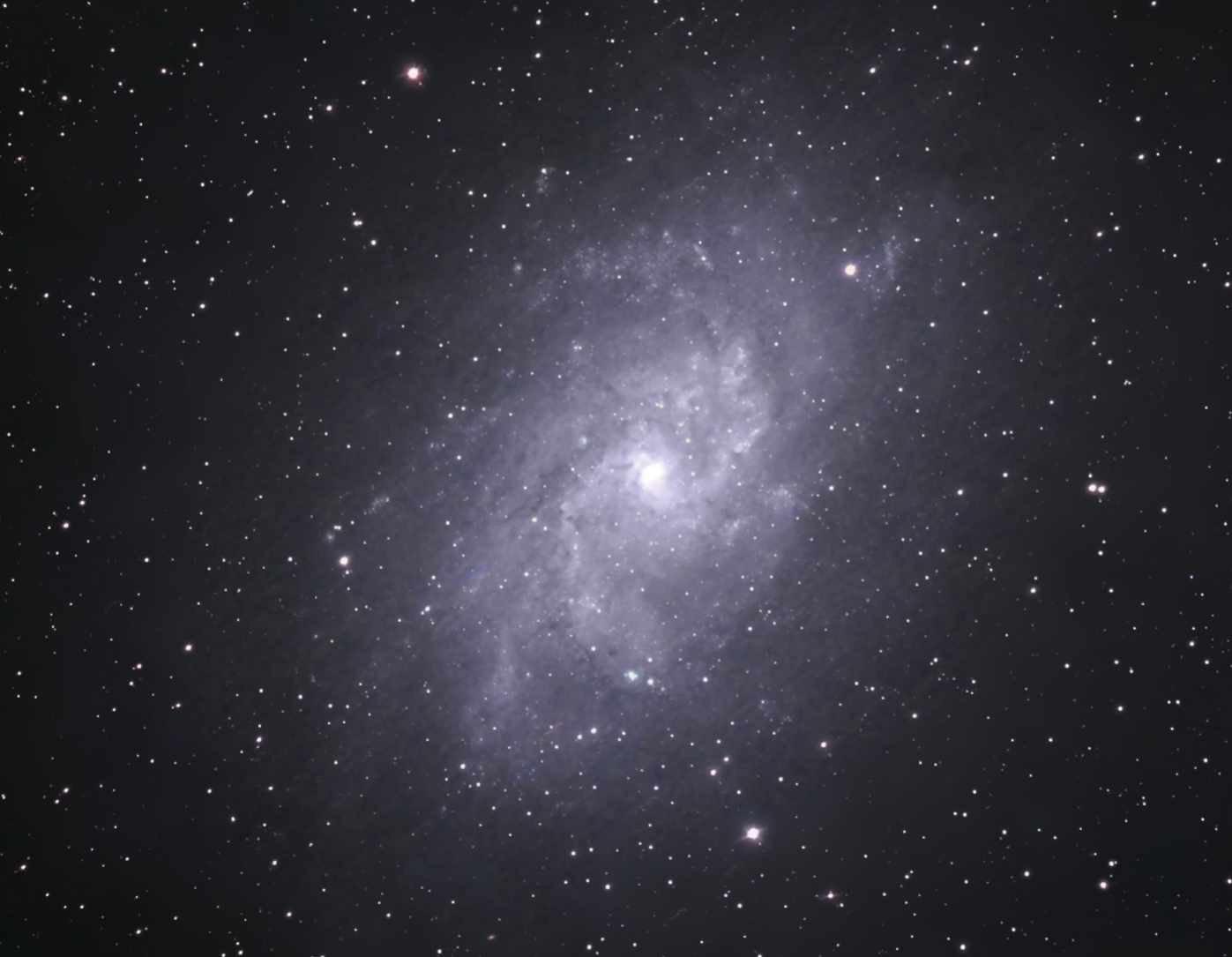
Monitoring the QHY533C during the capture run, we were pleased to see that the temperature held steady at –20°C throughout, despite it being a very mild evening. The fans on the camera were very quiet and could barely be heard over background noise.
The QHY533C may be pitched as an entry-level camera, but with its features, sensitivity and image quality, this is a camera that even the most experienced astrophotographer would be happy to have in their collection.
Low noise, high sensitivity
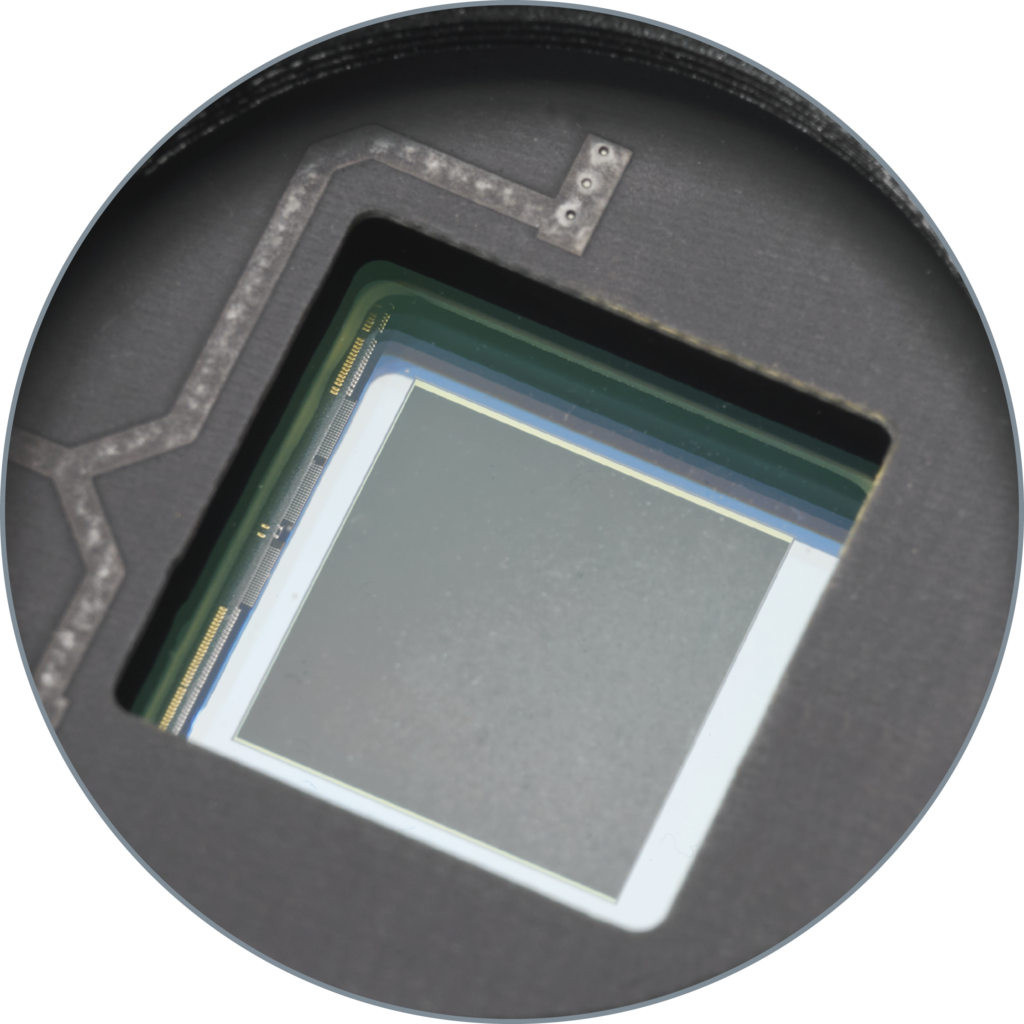
The QHY533C is equipped with Sony’s new generation of back-illuminated CMOS sensor. The 1-inch square sensor, comprising 3,008 x 3,028 3.76um pixels, is well-suited for medium to longer-length refractors (focal lengths of 500–1,000mm). ‘Back-illuminated’ means that all the embedded wiring within the chip is located behind the light-collecting elements, maximising the light-collecting power or QE (quantum efficiency).
The Sony IMX533 chip has very low noise while delivering high sensitivity and zero amp glow, even when pushing exposure times over five minutes. This combination makes calibration frames less critical and results in images that don’t need so much cleaning up in post-processing, reducing the risk of overworking the data.
The manufacturer has also designed the camera to eliminate dew or frosting on the sensor by including replaceable desiccant tablets in the sensor chamber that remove all internal moisture. A heating element also protects the optical window from external moisture, further reducing the risk of dew forming.
KIT TO ADD
1. Optolong L-Pro 2-inch filter
2. Canon or Nikon DSLR lens for widefield imaging
3. Canon EF or Nikon lens adaptor
VERDICT
